Generative AI is already shaping the modern. Many problems can be solved with its help, starting from controlling large companies and ending with the development of new research and creative works. The generative AI market globally is expected to reach above $65 billion within the next five years. In fact, 86% of IT leaders stated that this technology will create a significant impact on their organizations. Some of the most successful uses of current applications include customer contact, code support, and enterprise search.
Investment in AI is booming. According to the experts, in 2024, the companies will spend $13.8 billion, which is 6 times more than the current year. Many companies are integrating AI into their business plans and even their ongoing activities. New technologies such as retrieval-augmented generation and models specific to healthcare and law are emerging.
This increased interest in Large Language Models is the epitome of Artificial Intelligence. These models come up with new solutions to an old problem. Another concept rising now is the Agentic AI, where smart agents collaborate in order to solve complex problems. This makes it a powerful tool for building autonomous systems—systems that can operate without human intervention. In this article, we’ll discuss how Agentic AI can help create these systems from scratch, step by step.
Why Build Autonomous Systems with Agentic AI?
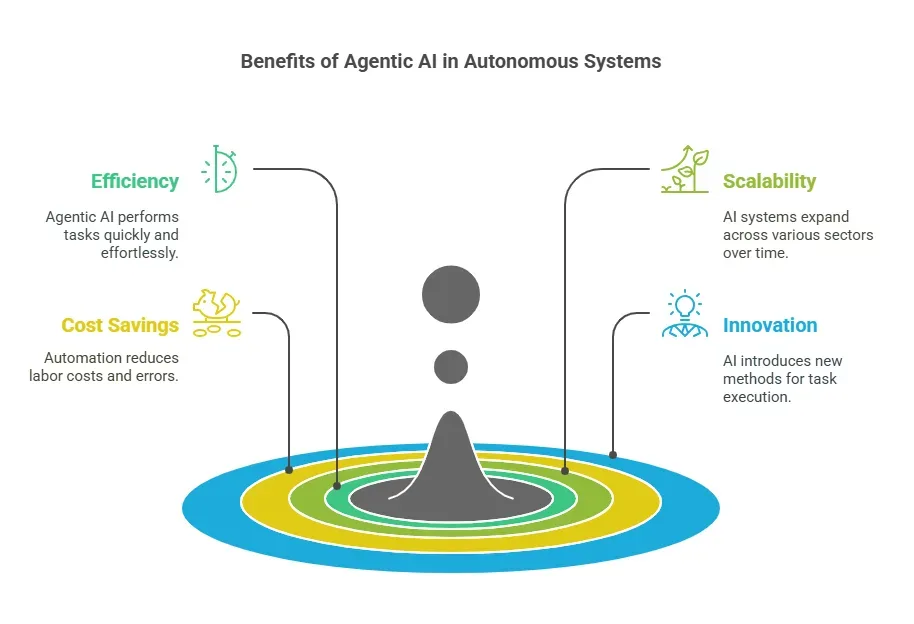
An Autonomous system uses its own knowledge and does not require any assistance from people. Some of the examples include autonomous vehicles, IoT devices such as home automation appliances, and industrial robotics. Here are some reasons why Agentic AI is ideal for these systems:
- Efficiency: Agentic AI is capable of handling many tasks with a lot of ease and within a short duration.
- Scalability: After some time, these systems are capable of being implemented in different sectors such as health care and supply chain.
- Cost Savings: Through automating processes that were originally done manually, firms reduce costs on labor and eliminate errors.
- Innovation: Agentic AI opens new possibilities to approach various tasks.
Discover how Agentic AI is transforming industries and driving innovation in our blog: “What is Agentic AI and How Is It Revolutionizing Technology?
Steps to Build Autonomous Systems Using Agentic AI

The development of an autonomous system with Agentic AI is quite sequential. Let’s explore them:
Step 1: Define the Goal
First, define your purpose of the system which you are going to develop. Does it have to work with inventory? It may be better to offer customer service or run an autonomous car? This is important as it makes the AI comprehend the need for the project.
Curious about how Agentic AI stands apart from traditional AI? Learn more in our guide: “Agentic AI vs. Traditional AI: Key Differences and Why It Matters
Step 2: Choose the Right Tools
Agentic AI uses advanced technologies. Select tools like Large Language Models, reinforcement learning, and APIs. These technologies allow the AI to perceive its environment and make decisions and act accordingly.
Explore the distinctions between LLM and Agentic AI in our blog: “What is the Difference Between LLM and Agentic AI?” and find out why it matters.
Step 3: Design the System
Now, you have to determine how the system will work up to the last detail. Consider these elements:
- Perception: Determine the way by which the system will gather the information. It can be sensors, cameras or databases.
- Reasoning: Find out how it will process information and come to decisions.
- Action: Explain how it will solve problems. This could range from controlling a robotic arm to send an email.
- Learning: Consider how it will evolve in the future based on user’s comments.
Discover the foundational elements of Agentic AI systems in our detailed blog: “What Is the Baseline Architecture of Agentic AI Systems?”
Step 4: Train the AI
It is the process of familiarizing the AI with its goals in order to prepare it for the tasks it needs to perform. Teach it some facts and set it up to do some learning in a safe place. For instance, get a self-driving car AI to learn how to drive on virtual roads before letting it loose on actual roads.
Uncover how Agentic AI is revolutionizing Security Operations Centers in 2025 in our blog: “How Is Agentic AI Transforming SOC Teams in 2025?”
Step 5: Test and Improve
Once the system has been constructed, one has to test it to confirm that it is operational. Simulate testing and actually perform tests in the real world. Find out the problem and correct it. This makes the system reliable and efficient since continuous improvement is carried out on it.
Stay ahead in tech investing with our curated picks: “Top 5 Agentic AI Stocks to Watch in January 2025.“
Applications of Agentic AI in Autonomous Systems

Agentic AI has many uses across different industries. Here are some notable examples:
1. Autonomous Vehicles
Self-driving cars rely on Agentic AI for navigation and detecting obstacles. These vehicles gather data from their environment. They make quick decisions about speed and direction. Also, they learn from past driving experiences to improve.
2. Smart Manufacturing
In the manufacturing sector, robots equipped with Agentic AI can enhance production lines. They adapt to changes in demand or equipment status. These robots decide when to switch tasks. They also figure out how to use resources in the best way.
Learn how Agentic Automation streamlines operations and drives innovation in our guide: “What is Agentic Automation?”
3. Healthcare Automation
In healthcare, Agentic AI supports patient monitoring. It analyzes vital signs and alerts medical staff about potential issues. This feature helps improve patient care. Moreover, it reduces the workload for healthcare professionals.
Prepare your business by understanding the risks in our blog: “What Should Enterprises Know About Agentic AI Risks?”
4. Supply Chain Management
Agentic AI can make supply chain operations more efficient. It predicts changes in demand and optimizes inventory levels. Also, it manages logistics on its own. This leads to better efficiency and lowers costs throughout the supply chain.
See how Agentic AI is reshaping financial services in our post: “How Will Agentic AI Revolutionize Financial Services?”
FAQs
What are agentic AI systems?
Agentic AI systems are powerful technologies. They can act on their own to reach goals. These systems make choices and learn from their surroundings without needing constant help from people.
What is an autonomous system in AI?
An autonomous system in AI operates by itself. It can perform tasks, make decisions, and respond to changes without any human assistance.
What is the architecture of the agentic AI system?
The architecture of an agentic AI system consists of four parts. First, it gathers data through perception. Next, it processes information for decision-making through reasoning. Then, it executes tasks through action. Lastly, it improves itself over time through learning.
Does agentic AI use reinforcement learning?
Yes, agentic AI often uses reinforcement learning. This approach helps the system enhance its decision-making. It learns from feedback and rewards in its environment.
Final Words
Agentic AI is currently in the development phase. It has great potential to improve business efficiency and speed. As it matures, more businesses will adopt it. However, implementing agentic automation needs thoughtful planning. There is no universal solution for every company. Each business should create unique AI agents tailored to specific tasks, which makes choosing the right tool difficult. Companies should understand the enthusiasm around this technology as well as the genuine benefits and risks it brings.

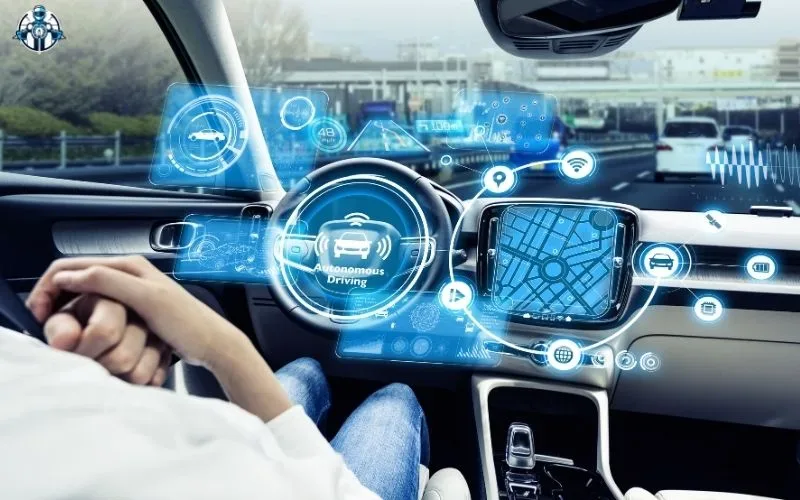


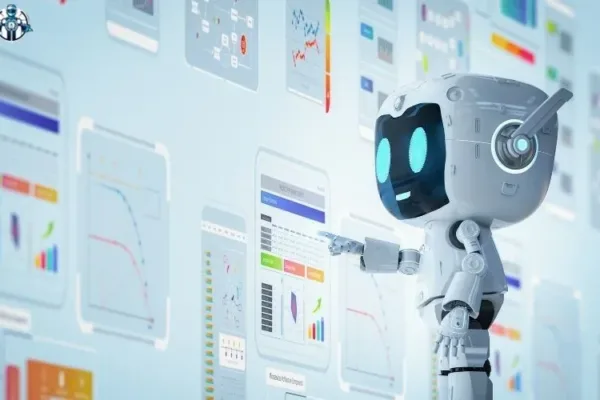
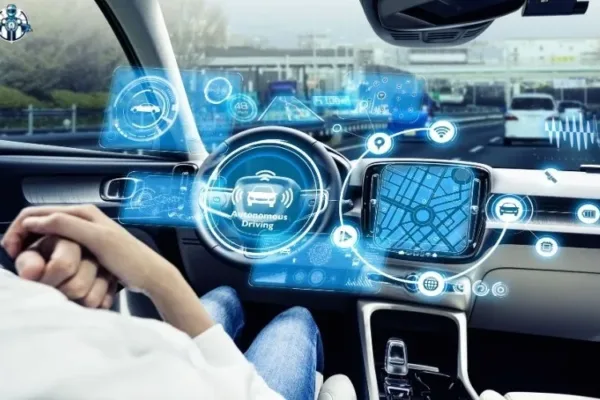





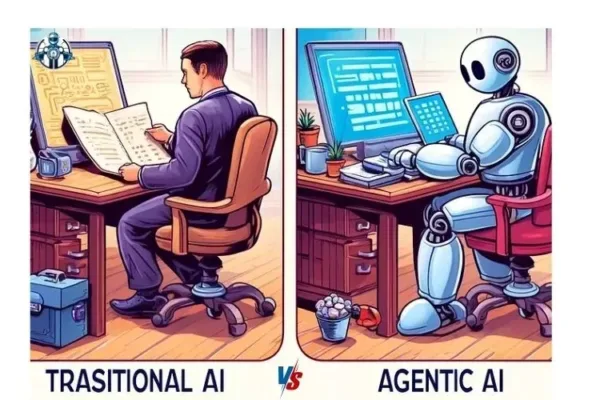
4 thoughts on “Agentic AI vs. Traditional AI: Key Differences and Why It Matters”